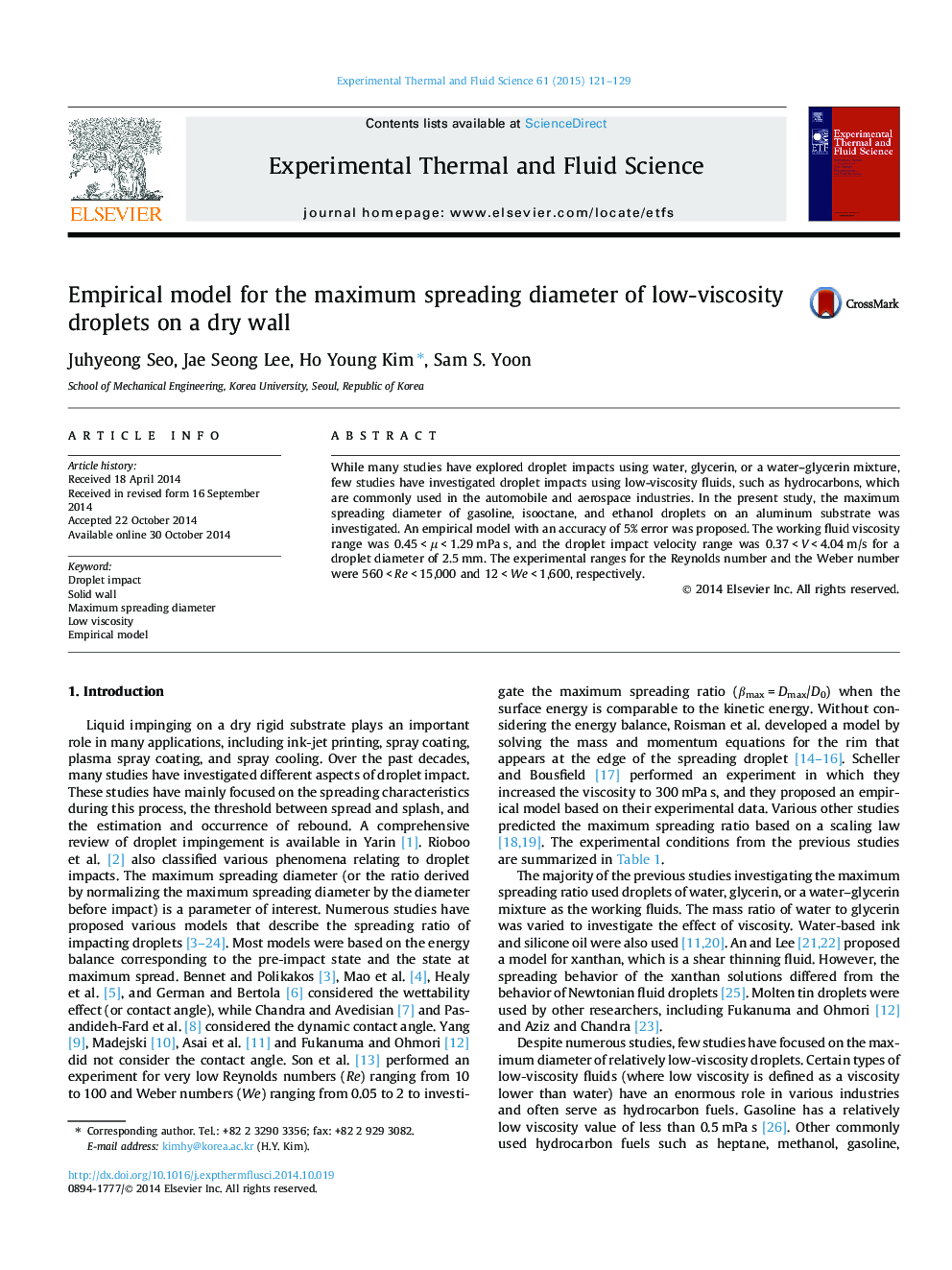| Article ID | Journal | Published Year | Pages | File Type |
|---|---|---|---|---|
| 7052313 | Experimental Thermal and Fluid Science | 2015 | 9 Pages |
Abstract
While many studies have explored droplet impacts using water, glycerin, or a water-glycerin mixture, few studies have investigated droplet impacts using low-viscosity fluids, such as hydrocarbons, which are commonly used in the automobile and aerospace industries. In the present study, the maximum spreading diameter of gasoline, isooctane, and ethanol droplets on an aluminum substrate was investigated. An empirical model with an accuracy of 5% error was proposed. The working fluid viscosity range was 0.45 < μ < 1.29 mPa s, and the droplet impact velocity range was 0.37 < V < 4.04 m/s for a droplet diameter of 2.5 mm. The experimental ranges for the Reynolds number and the Weber number were 560 < Re < 15,000 and 12 < We < 1,600, respectively.
Related Topics
Physical Sciences and Engineering
Chemical Engineering
Fluid Flow and Transfer Processes
Authors
Juhyeong Seo, Jae Seong Lee, Ho Young Kim, Sam S. Yoon,
